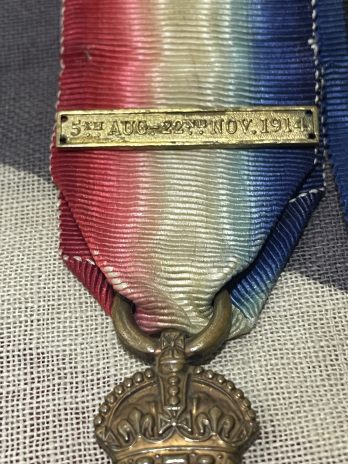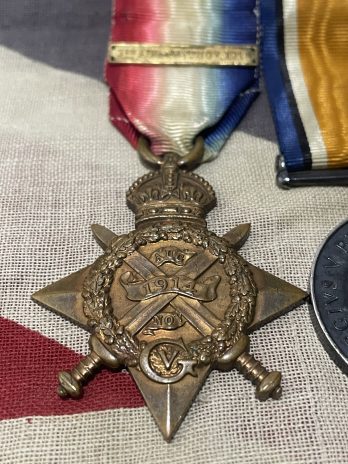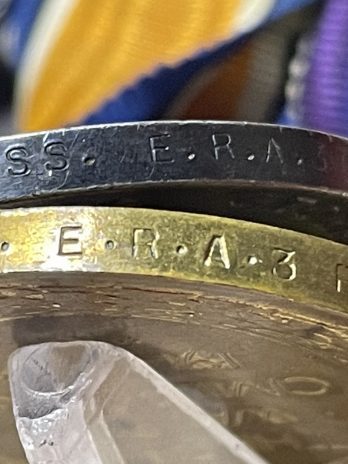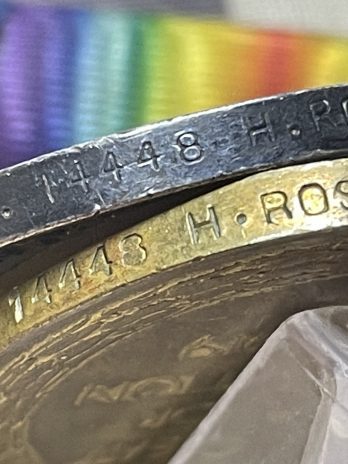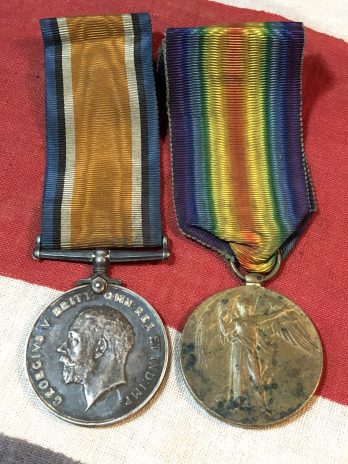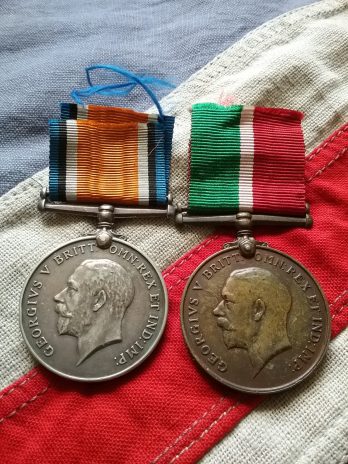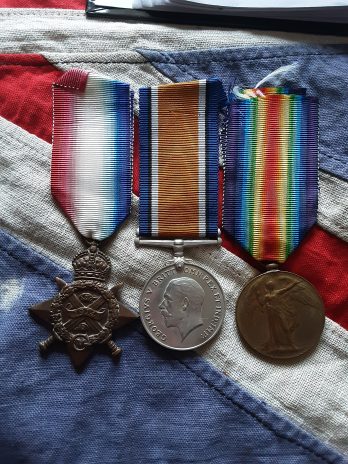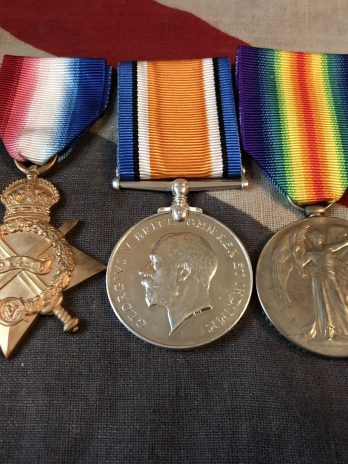1914 Star correctly named CLY.4/1729 H ROSS AB RNVR NELSON BTTN RND
Pair named M.14448 H Ross ERA 3 RN
Hugh was born April 1894 and entered service with the Royal Navy Volunteer Reserve in 1910 aged 16. His address at the time was 3 Albert Cottages, Govan, Lanarkshire.
We see he was an apprentice mechanic at the time of enlistment.
He left Clyde Division and was mobilised to Walmer Camp in Kent on the 21st of August 1914 and the next day joined the 5th Battalion, 2nd Royal Naval Division, Nelson Battalion.
The award of the 1914 Star tells us he would have served overseas at the Siege of Antwerp, August to September 1914. The siege ended in the capitulation of Antwerp into German hands.
He did not go with his Battalion to Gallipoli as upon his return to the UK, Hugh then left the Royal Naval Division to serve in the Royal Navy. A note on his record states this to be on the 22nd of July 1915.
After his stint at HMS Vivid II he is sent to serve aboard HMS Aroura in August 1915. In March 1916, HMS Aurora covered the seaplane raid on Hoyer. In May 1917 the cruiser was fitted with chutes and rails for naval mines, which discharged over the stern. The ship carried 74 mines. Over the course of three mine-laying missions, the cruiser laid 212 mines.
Hoyer
25 March 1916 – A Seaplane Adventure
Following the successful raid on Zeebrugge, the RNAS decided to carry out a raid on the airship sheds at Hoyer. The attacking force this time was much smaller though consisting only of three Short 184 and two Sopwith ‘ Baby’ seaplanes, carried in HMS Vindex, supported by the whole of the available Harwich force, in turn supported by the Battle Cruiser Fleet from Rosyth.
The raid turned into a bit of disaster as there were no airship sheds at Hoyer and three of the five aircraft were lost. Of those that did return, one pilots reported that the sheds were in fact inland at Tondern, but his bombs had jammed in the racks.
Flight Sub-Lieutenant Cyril Gradwick Knight and Midshipman Stanley Edwin Hoblyn were shot down in their Short 184 (8383) and captured.
Short 184 (8040) with Flight Lieutenant George Hancock Reid and Chief Petty Officer Richard Mullins had dropped one of their three 65lb. bombs on an unknown building and then followed the coastline to Hoyer. They then attempted to fly inland to Tondern, but were forced back by bad weather. Passing over Hoyer again they spotted one of the Sopwith Baby seaplanes (8153). They landed on the water to discover the pilot Flight Lieutenant John Findlay Hay trying to restart his engine
Reid attempted to take off in the Short with Hay on one of the wings. They reached the island of Sylt when the port side
engine suddenly cut out. A broken magneto meant that the engine could not be fixed, and the seaplane attempted to taxi out to their ship on the remaining engine. They attempted to capture a German sailboat but the seaplane was almost un-steerable in the more choppy open sea. At that point a motor-boat filled with soldiers appeared and two German seaplanes landed on the water immediately behind the Short. All three men were captured.
After leaving HMS Aroura, he served aboard the brand new ship HMS Curlew. She was commissioned in December 1917 and that is when Hugh joined her. He was demobbed in 1919. HMS Curlew was sunk in WW2, on the outbreak of war, she served with the Home Fleet. She participated in the Norwegian Campaign, and whilst operating off the Norwegian coast on 26 May 1940, she came under attack from German Ju 88 bombers of Kampfgeschwader 30 and was sunk in Lavangsfjord, Ofotfjord near Narvik. 9 sailors were lost with the ship.
The Navy medal rolls confirm the award of the 1914 Star Trio and awarded to him aboard HMS Curlew.
All medals are swing mounted on a clasp for wear with original silk ribbons.
Please note that the clasp is a ‘copy’ and is loose and the British War Medal is named upside down.
Related products
-
WWI
Mercantile Marine pair George Dean. Birkenhead SS Oriana
£75.00Original price was: £75.00.£70.00Current price is: £70.00. Add to basket -
WWI
1914 Star Trio. John Hacking. 7th Field Bakery, Army Service Corps
£140.00Original price was: £140.00.£125.00Current price is: £125.00. Add to basket









